
Alaska, with 424.5 million acres, is the biggest state in the United States. It is so large that you could fit California, Montana, and Texas inside the state and still have land left over. But Alaska isn’t all frozen glaziers and tundra.
Thirty-five percent of Alaska is forested. So, what types of forests are in Alaska?
Alaska has three State Forests and two National Forests: Chugach National Forest and Tongass National Forest, the largest national forest in the United States. Coastal forests have Western hemlock and Sitka spruce. The interior forests contain white spruce, birch, and poplars.
Alaska only has around 734,000 residents, but ecologically it is a giant, containing a third of U.S. federal lands. Thirty percent of the U.S. coastline and sixty-three percent of the nation’s wetlands are in Alaska. It’s also home to the world’s biggest intact temperate rainforest.
But even the boreal forests in the Alaskan interior are vital for our world’s carbon storage.
Table of Contents
2 National Forests In Alaska
Alaska may only have two National Forests, but they are huge, around the size of two U.S. states. These diverse parks are home to an abundance of waterways, mountains, glaciers, bogs, and, of course, trees.
Chugach National Forest
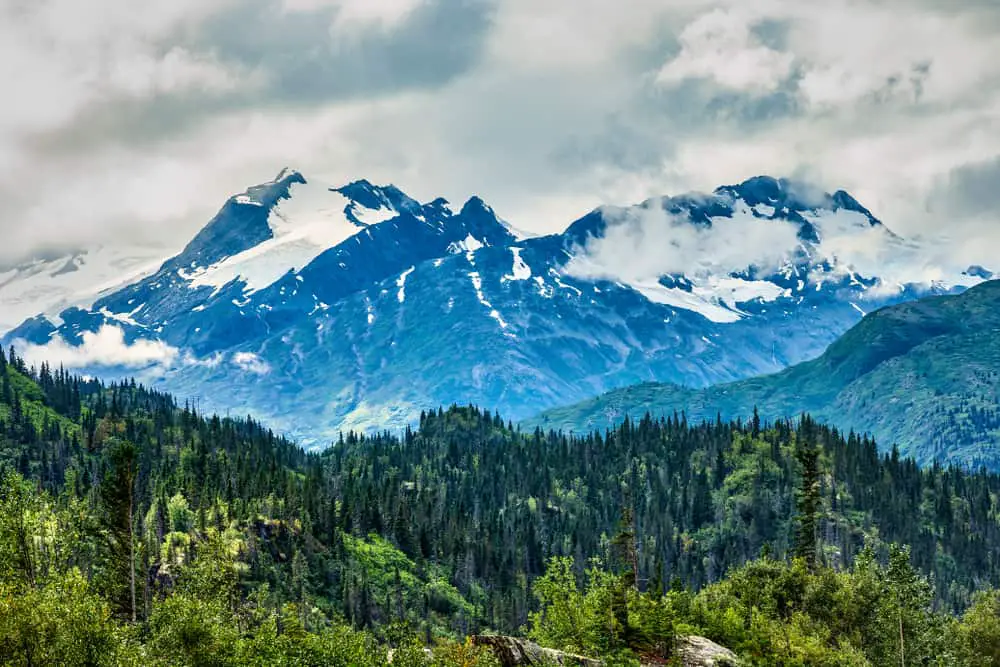
The Chugach National Forest is the United States’ most northernly National Forest and, at 5.4 million acres, making it roughly the size of New Hampshire. The park is divided into three major areas: Copper River Delta, the Eastern Kenai Peninsula, and the Prince William Sound.
The Chugach National Forest hosts a wide diversity in both landscape and wildlife. It is home to all five North American Pacific salmon species: pink, chum, silver, red, and king. Between 3-5 thousand bald eagles live in the Prince William Sound. Around 5000 moose call the Kenai Peninsula home.
The forest boasts more than 500 miles of trails yet only has 90 miles of roads. There are numerous campgrounds along with 41 public cabins, some of which have to be accessed by floatplane or boat. It is popular with those who fish, hunt, hike, and enjoy water activities, including kayaking.
Tongass National Forest

The Tongass National Forest covers 17 million acres, around the size of West Virginia, making it the biggest National Forest in the U.S. It is also home to our planet’s biggest intact temperate rainforest. Seventy thousand people call the area home. First Nations people such as the Tlingit, Haida, and Tsimshian have deep cultural traditions to this land.
The area is also home to wolves, brown bears, salmon, eagles, cutthroat trout, the northern flying squirrel. There are over forty species of mammals and over two hundred species of birds. The garter snake makes up for the lone reptile species, and there are only five amphibians, including rough-skinned newt, the most poisonous salamander on the planet.
On a more microscopic level, the forest is home to scuzz. Scuzz is the common name for a community of single-cell organisms that dwell on tree needles that provides essential nutrients to the base of the food chain. The soil is also abundant with life, including mycorrhizal fungi that are essential to the trees’ health.
The Tongass National Forest has long been a roadless area, but since 2019 this has been a matter of great debate. The area is popular for hiking, exploring its caves and glaciers, water sports, and camping. In addition to its campgrounds, there are 142 cabins that the public may reserve for personal use.
3 State Forests In Alaska
Alaska’s state park system is bigger than any other in the United States, three of which are forests. Altogether, these three state forests make up about two percent of Alaska’s state-owned land. While some of the lands are fully protected, most of it is managed, meaning it can be logged at certain times.
Haines State Forest
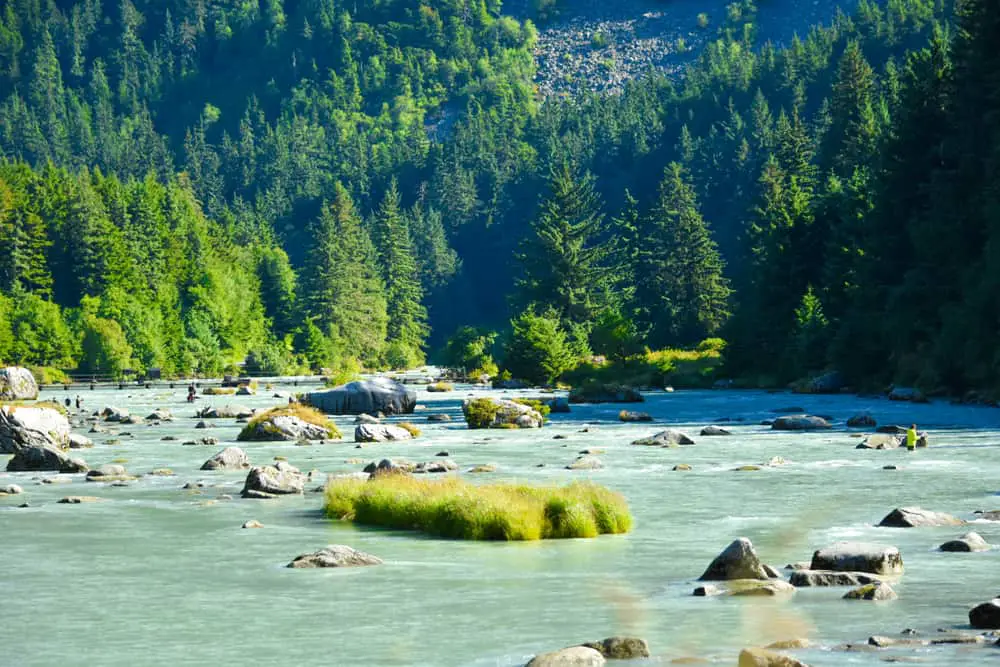
The Haines State Forest covers 286,000 acres, including the Chilkoot, Chilkat, and Ferebee river watersheds. It ranges from a wet coastal climate at sea level and grows drier and colder as it moves into the interior.
The State Forest hosts two main forest types: Western hemlock and Sitka make up one, and the black cottonwood and willows make up the other. Forty-two thousand acres of the forests are open for managed timber harvests.
Prospecting and mining also occur in the area. Recreationally, it is used for hunting, fishing, camping, hiking, skiing, and snow machining.
Southeast State Forest
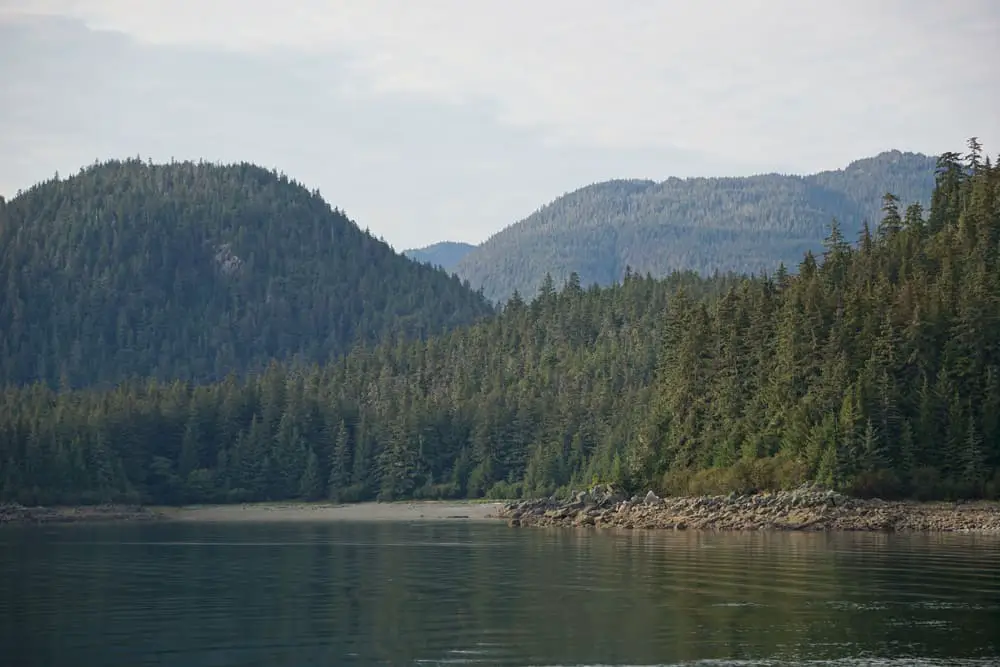
The Southeast State Forest is the newest state forest in Alaska, designated in 2010. The area covers 46,952 acres and is broken up into 32 management units located in and around Prince of Wales, Ketchikan, Wrangell, and Petersburg. Most of the area is classified as a “working forest,” thus open to managed timber harvesting.
Tanana Valley State Forest
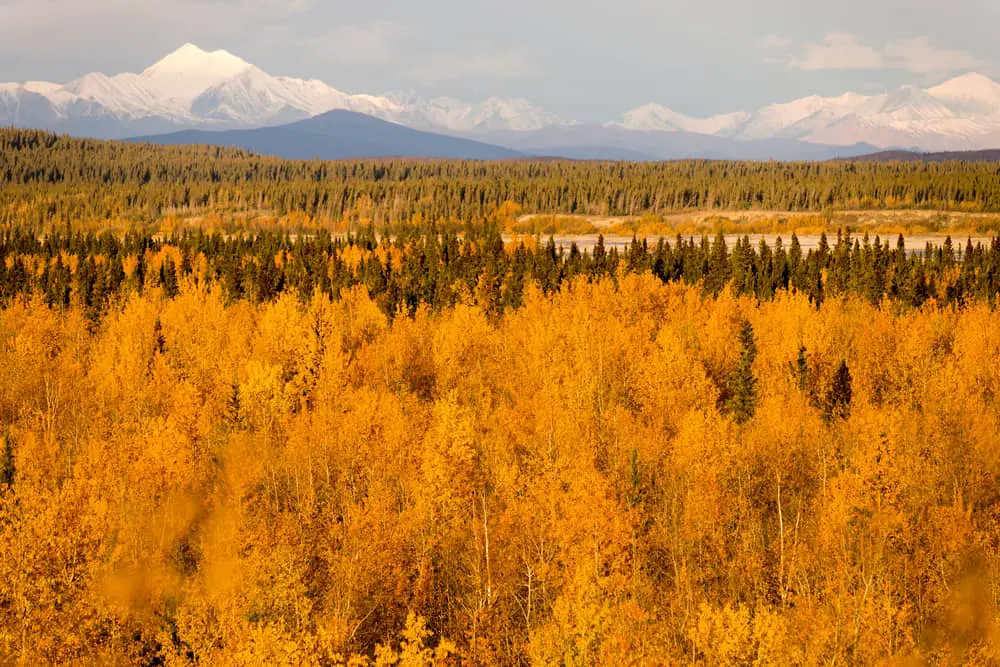
The Tanana Valley State Forest sits in the Tanana River Basin, covering 1.81 acres of east-central Alaska. Its elevation ranges from 275 feet to over 5,000 (83.82-1,524 m). The trees in the park are mostly balsam poplar, black spruce, paper birch, and quaking aspen.
The area is open for managed commercial use, such as mining, oil and gas leasing, grazing, and gravel extraction. Timber harvesting is the biggest, although 12,400 acres are reserved for research.
Tanana Valley State Forest is also used recreationally and has many trails. The area is popular with mountain bikers, campers, hikers, horse riding, snowmobiles, and various types of skiing. People also enjoy hunting, trapping, and fishing.
Types of Trees in Alaskan Forests
Alaska has over thirty native species of trees, the bulk of which live in the more temperate forests of the South. Due to the climate and terrain, some of the trees end up looking bushy rather than typical tree shapes. Nonetheless, plenty of Alaskan timber is tall and harvestable if in managed working forests.
6 Types of Trees in Alaskan Interior Forests
While there are over thirty native species of trees, only six of them commonly populate the interior Alaskan forests.
Balsam Poplar
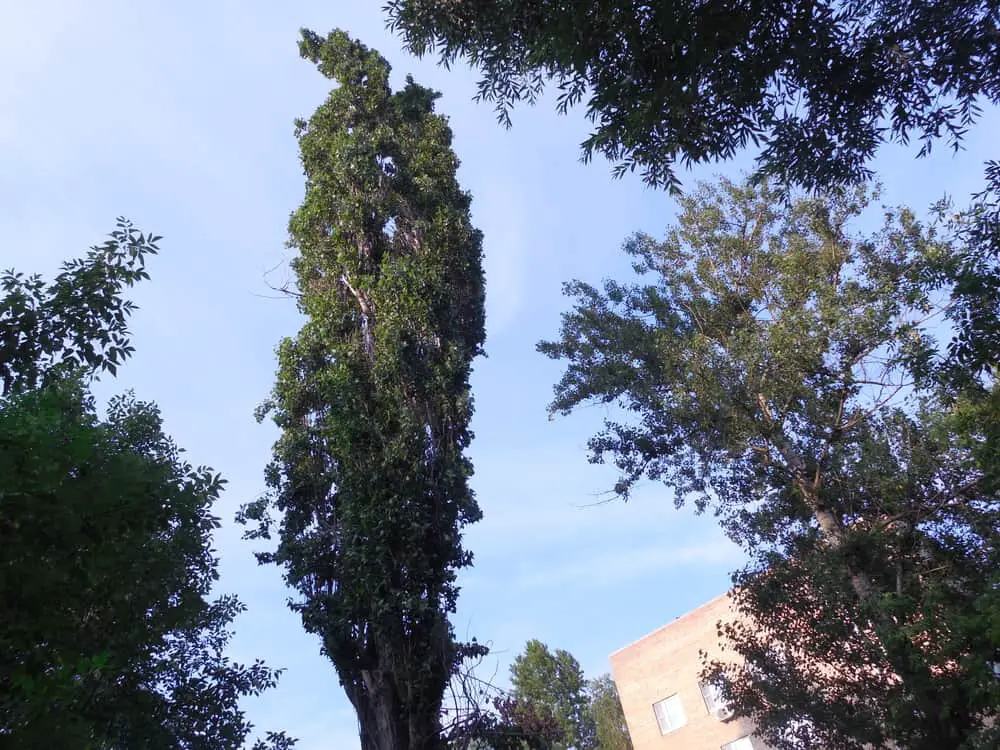
Balsam poplar is the widest-ranging broadleaf in Alaska. It is easily mistaken for the black cottonwood and the quaking aspen. However, unlike the cottonwood, the balsam poplar grows in the Alaskan interior forests around the floodplains. The tree sometimes hybridizes with the quaking aspen.
Young balsam poplar provides food for animals such as moose and deer. Bees also use the tree’s resin to waterproof their hives.
Historically, balsam poplar bark was used to make toys and spoons. They were also used for smoking fish. These days balsam poplar is used to make products such as tissues, veneer, paper, and particleboard.
Balsam poplar produces buds that contain salicin, which is similar to Aspirin’s active ingredient, salicylic acid. The young shoots from the tree also have bisabolol, which is thought to have anti-inflammatory, anti-microbial, and anti-irritant properties.
Black Spruce
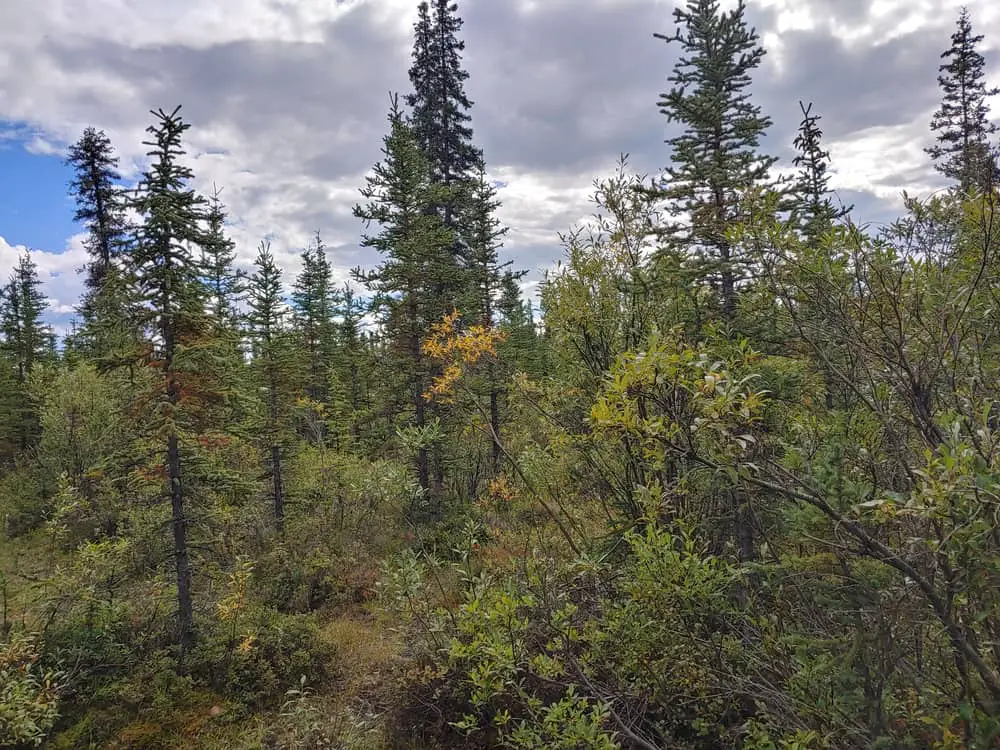
Black spruce is a hardy slow-growing tree that can thrive in harsher growing conditions. This makes it perfect for Alaskan interior forests, which can handle some permafrost conditions and poor soil. As a result, it is the dominant tree in these regions.
It has a scraggly appearance but is tough and has a defense system against the spruce beetles that pushes the insects out with pitch. The tree supports lichen, which the caribou eat. Black spruce also makes good homes for red squirrels and grouse.
Traditionally, black spruce was used to make things such as fish traps, drying racks, and snowshoe frames. The tree’s resin was also used for medical purposes, often applied to wounds.
These days black spruce is used to make paper products and essential oils. The oil is believed to have a host of medicinal properties, including antibacterial, anti-inflammatory, antiseptic, and antiviral. In addition, people use it for respiratory ailments, easing muscle and joint pain, and helping with anxiety, stress, and fatigue.
Larch (Tamarack)
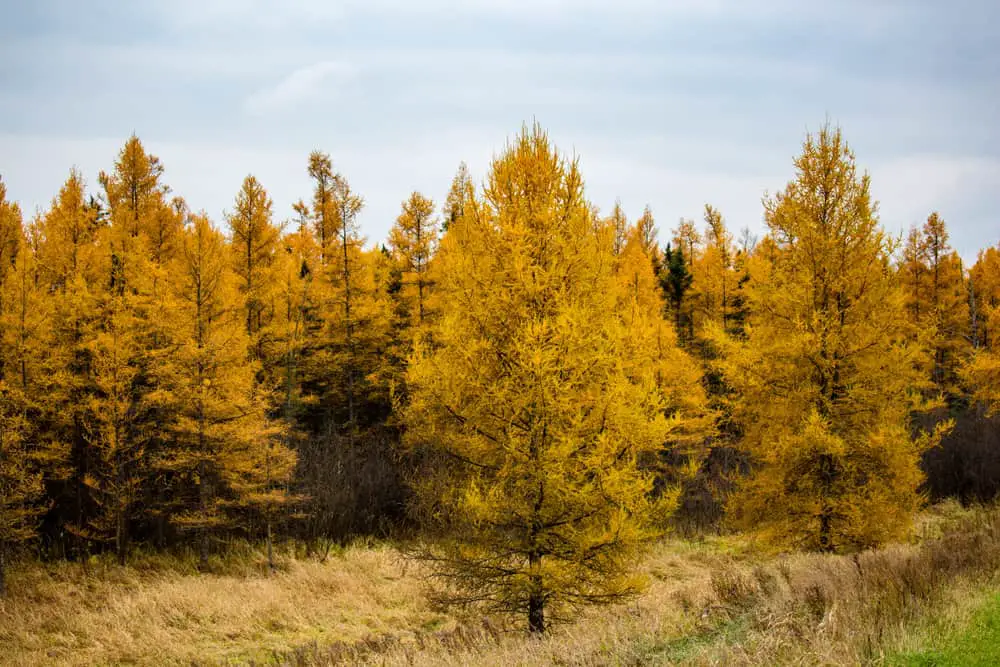
Larix Larcinia often called the Alaskan Larch or tamarack, is common throughout the Northern end of the continent. It grows well in bogs. It is a deciduous conifer, meaning its needles will turn autumn colors before dropping for winter.
The tree rarely dominates a forest. However, animals do depend on it. For example, porcupines eat their inner bark, snowshoe hares munch on the seedlings, and red squirrels enjoy the trees’ seeds. Many varieties of birds enjoy making nests in the trees, too.
Commercially the tree was once popular for telephone poles. It is also used for making dog sled runners and duck and goose decoys. However, it isn’t a wood that is easily treated, so while it is used for some furniture and flooring, it is not massively popular.
Paper Birch
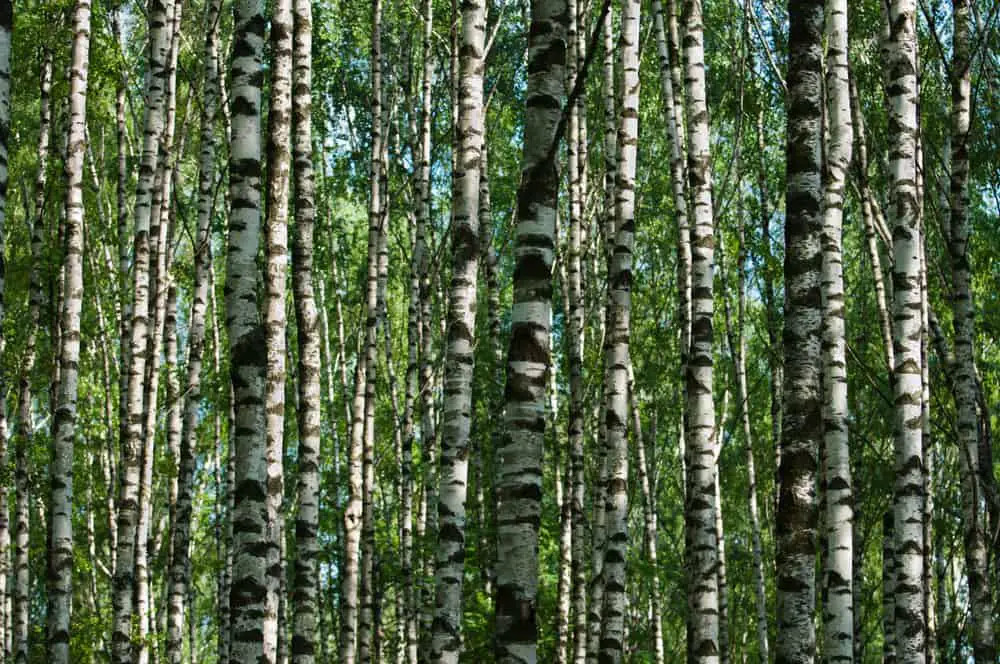
The paper birch is one of the four hardwood tree species in Alaska and is found in bogs and other poorly drained areas. However, it avoids areas with permafrost.
The bark of paper birch was traditionally used for roofing and canoes. Today, the timber industry values the straight-grained tree, as it is easy to split. The wood is commonly used for spools, chopsticks, toothpicks, tongue depressors, cabinetry, flooring, and furniture.
Paper birch sap contains a toxin, methyl salicylate. Nonetheless, some have used it for medicinal purposes, believing it helps rheumatism, arthritis, gout, and other ailments.
It has also been used as a skin poultice and a diuretic. Its leaves and buds are also believed to have antibacterial properties.
Quaking Aspen

The quaking aspen is found in mountainous, sloping regions that have no permafrost and are well-drained. It has a pretty short lifespan for a tree, averaging 60 to 80 years. But it regenerates from stumps and cuttings, and its seeds have a high viability rate.
Interestingly, its white bark is capable of photosynthesis. Thus, even in winter, this deciduous tree can continue to produce energy. It also provides both shade and food for elk, deer, and moose. The ruffed grouse also depend on the tree for nesting and food.
The timber industry likes it for its straight grain, making it popular for veneers and plywood. The hardwood is also used for chopsticks and other wood-turned products.
Medicinally, its bark has been used for joint pain and inflammation. This is due to the chemical salicin, which is similar to the active ingredient in Aspirin. However, there has been no research if taking it is safe.
6 Other Common Trees In Alaskan Forests
Alder
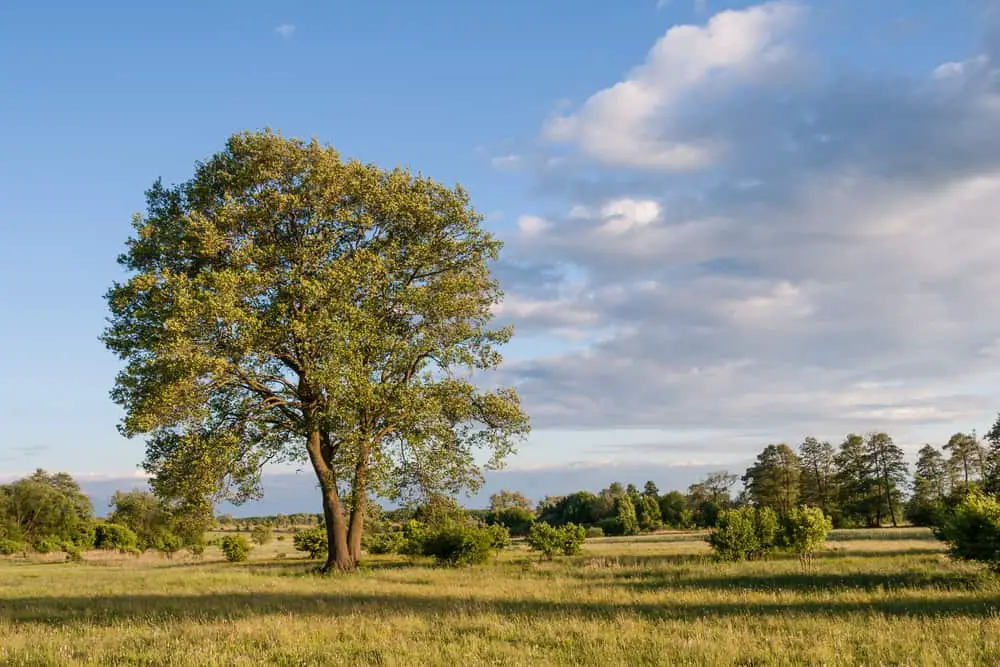
There are four species of alder native to Alaska: American green alder, Sitka alder, red alder, and thin leaf alder. They are tenacious hardwood trees, able to grow in rocky areas and help enrich soil damaged by floods or deforestation by combing efforts with bacteria to deposit nitrogen into the earth and streams.
The alder can be rather bushy and give hikers a difficult time. However, the red alder is prized for how well it smokes salmon. The bark has also been traditionally used to treat poison oak and other skin irritations such as insect bites.
Black Cottonwood
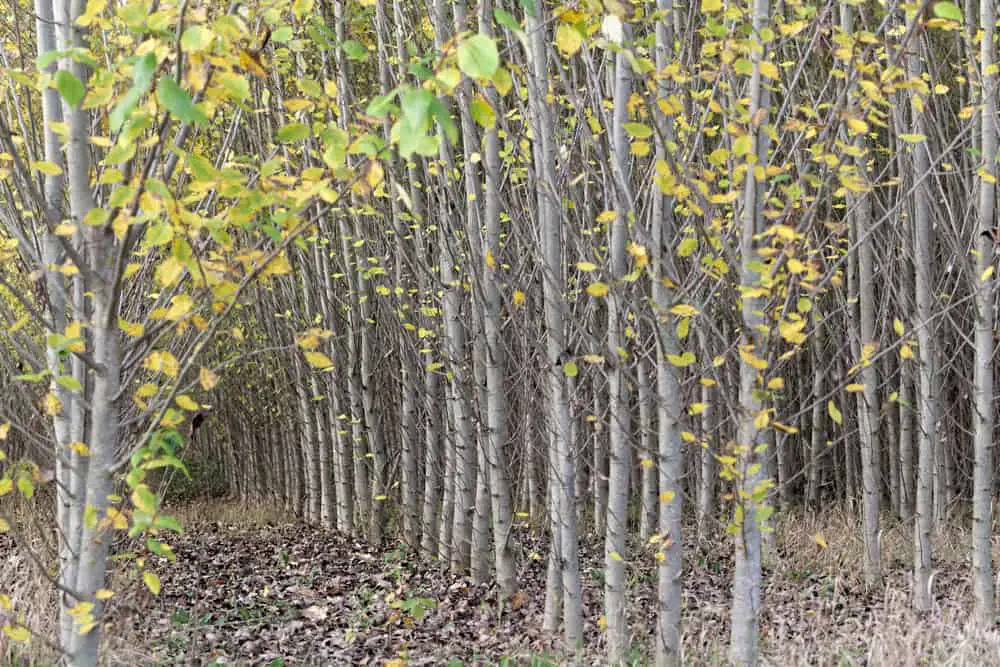
Black cottonwood is known for its cottony seed pods. It does not tend to grow in the boreal forest, preferring the southern coastal climate. The only area it seems to share with the balsam popular is the Cook Inlet, where some hybrids can be found.
It is known for its hardwood, even its bark. Its lumber is valued for its strength. Its wood is also used to make veneer, crates, boxes, and molding.
Like other hardwoods in Alaska, it has salicin and thus has been used in the past for fevers and inflammation. Its resin has been used for waterproofing baskets. Bees use the resin and combine it with their own enzymes to produce a glue known as propolis. It helps preserve the hive from decay and keeps it healthy.
Sitka Spruce
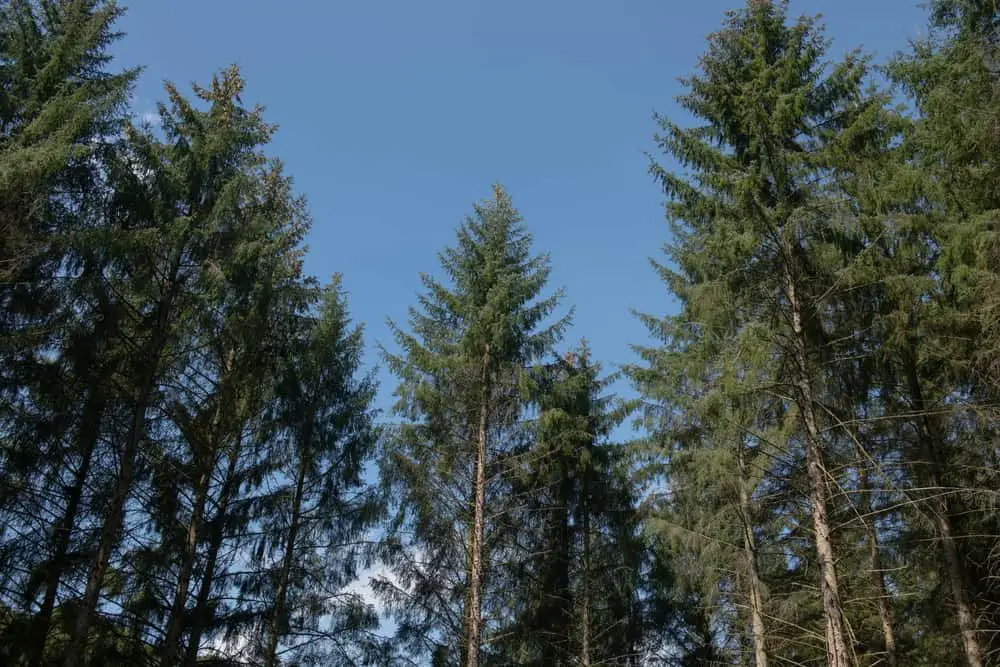
The Sitka spruce is Alaska’s state tree and the largest variety of spruce. Unfortunately, it is vulnerable to the spruce beetle, which feeds and breeds in the tree’s phloem. Parasites and natural predators are essential for keeping the spruce beetle under control, as they can kill the trees.
Bald eagles and peregrine falcons love Sitka spruce for roosting. Its foliage also provides food for deer, elk, porcupines, rabbits, and hares.
Sitka spruce is considered easy to work with, thus highly valuable to the timber industry. Those making pianos and other instruments find the wood particularly useful. But it is also popular when making parts for airplanes and boats. Traditionally, its resin was used to make pitches.
Medicinally, the tree has been used in the past for its laxative properties, like chewing gum, and to relieve skin irritants. People have also used it in the past to try to treat syphilis and gonorrhea.
Western Hemlock
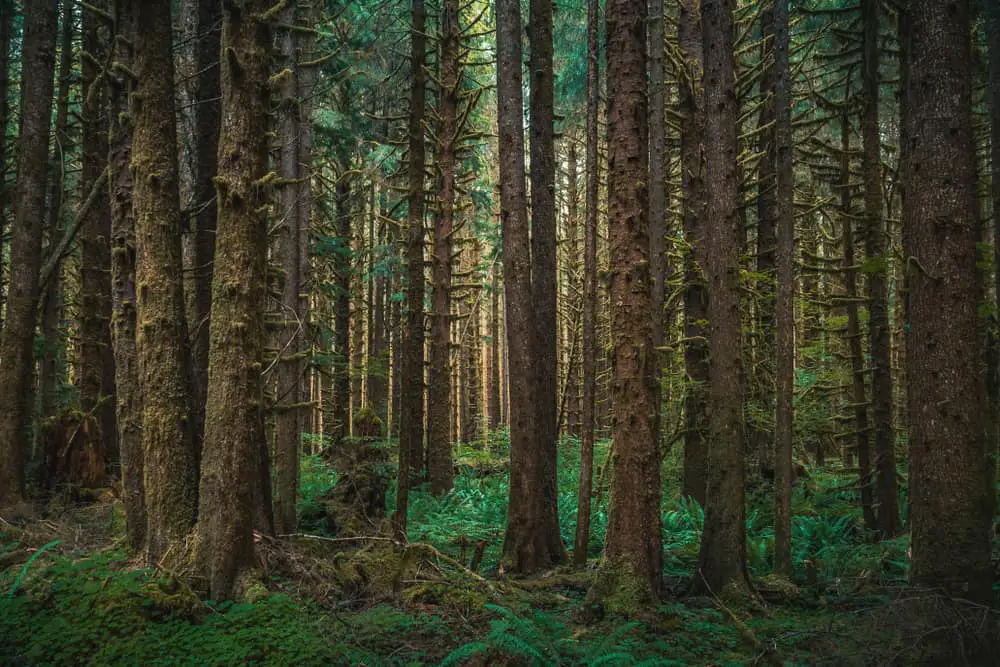
Western Hemlock, also called Alaska pine, thrives in low elevation areas near the coast. It is the biggest hemlock species and manages to exist in forests of other big trees, such as the Sitka spruce, thanks to its ability to tolerate lots of shade.
In the past, Western hemlock wood was mainly used as mine timbers and railway ties. It is now used in construction and pulp, as well as roof decking, molding, trim, and veneer. In addition, the bark is high in tannin; thus, it has historically been used as a tanning agent for hides, baskets, and even cosmetics.
White Spruce
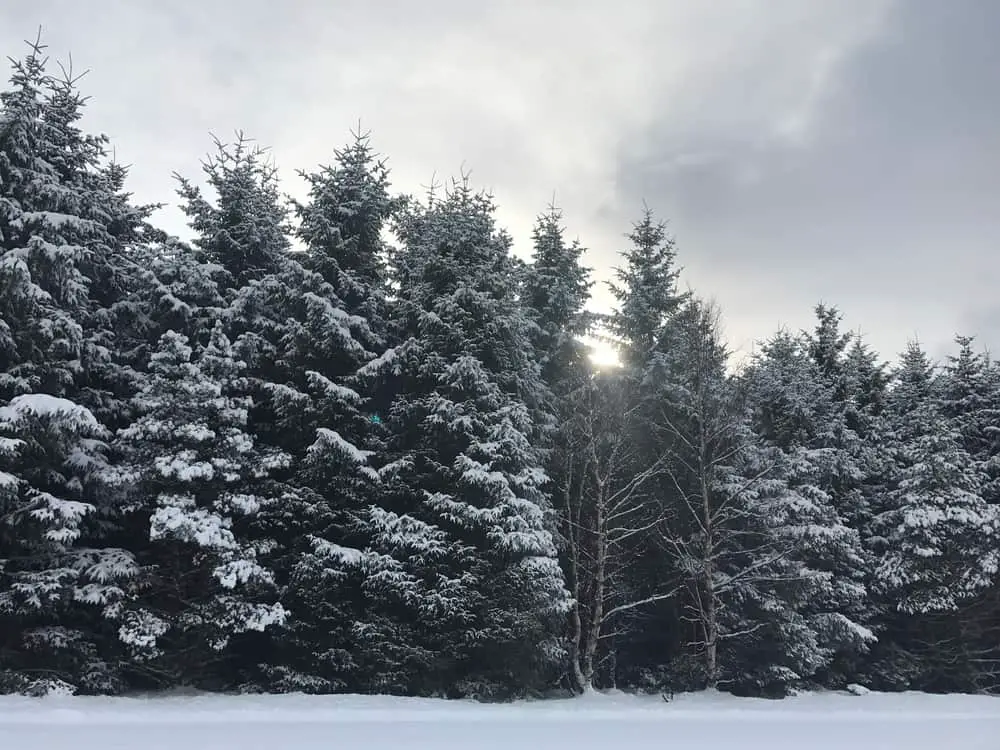
The white spruce is a tall, well-shaped tree that produces very picturesque pinecones. It grows in a range of soil conditions, although it does avoid areas of permafrost. Its needles are particularly sharp and stiff, thanks to its four-sided construction.
Traditionally, the wood was used for snowshoe frames and bows, with the bark being useful to make pots and trays. Today it is valued for its excellent strength-to-weight ratio and stability. It also produces quality pulp.
Willows
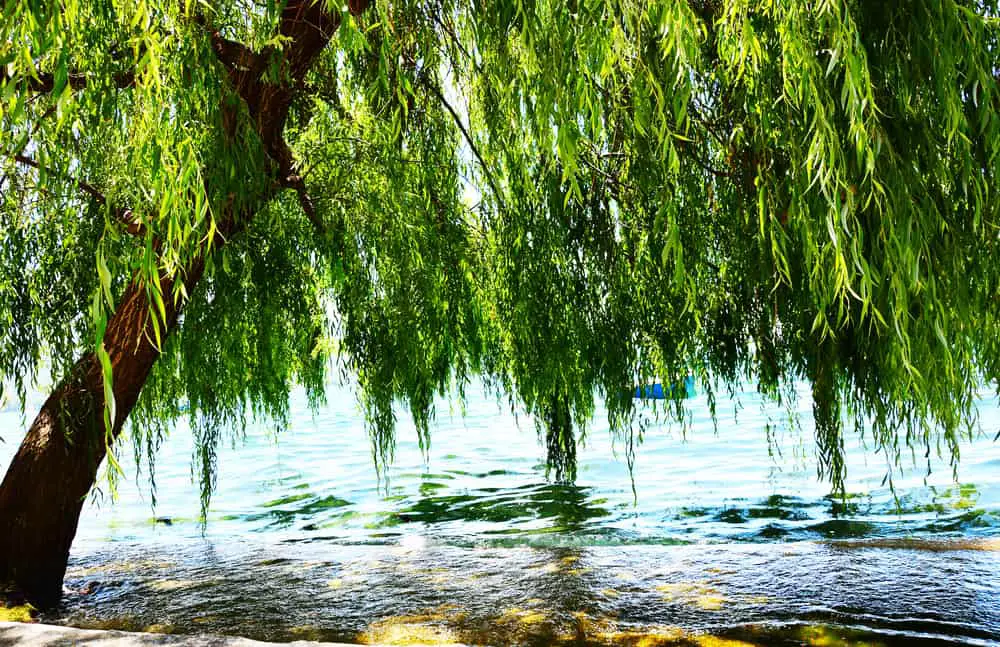
There are around forty types of willows in Alaska, some that look more like a shrub than a tree. They are fast-growing and enjoy areas of high sediments, such as near rivers. However, they do not do well with shade, thus are not often found with trees such as the Sitka spruce.
Willows are used as a food source by a few animals, such as the snowshoe hare, moose, and occasionally the caribou. The bumblebees value the tree’s flowers, and its buds are eaten by musk oxen, beaver, Arctic ground squirrel, voles, and lemmings.
Sources:
U.S. Forest Service: Alaska Region
U.S. Forest Service: Forest Service National Resource Guide to American Indian and Alaska Native Relations
Alaska Department of Fish and Game: Featured Species for Forest Habitats
Only in Your State: Tongass National Forest
Alaska.org: Alaska Trees
National Agricultural Library Digital Collections: Guide to Alaska Trees
U.S. Forest Service: The Density and Distribution of Sitka Spruce and Western Hemlock in Southeast Alaska
